Panning
Panning is the spread of a monaural signal in a stereo or multi-channel sound field - it is critical to the make up of the stereo image.

Usually, the most problematic area of the sound field is the center, as this is normally the busiest place within a mix. It is advisable to keep the kick, snare, bass, and vocal in the center as they provide the music with a solid grounding and help aid the rhythm (although these rules can often be broken to great effect). For every other instrument, however, it is advisable to position them either side of the center.
Panning several instruments hard left and right can be tempting to create a wide stereo sound which can produce an excellent sonic sound, but generally should be avoided. Many instruments can soon become stacked in the same area leading to a masked, muddy sound. Instead of panning hard left and right for all instruments, find a place inside those extremes.
To maintain balance within a mix, for every element panned one way, another element should be panned the other
Panning gives instruments their own space in the stereo field. It can be used to eliminate masking by moving sounds out of the way of other sounds so the listener can clearly define them.
A good example of masking can be seen when two electric guitars are playing simultaneously as they both quickly eat up valuable frequency bandwidth. Simply panning one left by 40% and the other right by 40% can help to free up mix room.
There are no absolute rules for panning. Like with every aspect of mixing, it is best to experiment and use your ears. If it sounds good, roll with it.
Suggested Panning Positions
The table below suggests some commonly used positions. A clock face is used as the comparable analogy to panning, with 7 and 5 on the clock being hard left and hard right. Pan the instruments anywhere between these positions.
| Instrument | Position | Comment |
|---|---|---|
Kick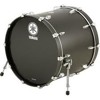 |
Bass heavy instruments, such as the kick, should be kept near the centre as to not disrupt the balance of the track | |
Snare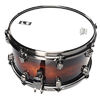 |
The snare reinforces the rhythm of a track and therefore should be set around the centre | |
Toms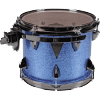 |
One tom to the left and the other to the right helps balance up the mix. Toms are best used on fills only. Beware if Toms are set too wide they can be very distracting and over-powering in the mix | |
Hi-Hat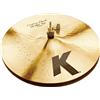 |
Hi Hats can be panned flexibly as they emit high frequencies and do not disrupt the balance too much | |
Overheads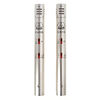 |
Overheads are best panned fairly wide but should never be too loud as to distract the listener | |
Bass Guitar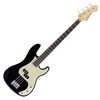 |
Bass heavy instruments, such as the bass guitar, should be kept near the centre as to not disrupt the balance of the track | |
Rhythm Guitar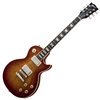 |
If the rhythm guitar has been double track pan the two tracks hard left and hard right | |
Acoustic Guitar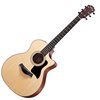 |
If the acoustic guitar has been double tracked or recorded in stereo pan the two tracks hard left and hard right | |
Piano |
Stereo
Mono
|
For a stereo recording of the piano, pan the two tracks left and right. If recorded in mono try panning just off centre. |
Strings |
Wide pads and strings help to really open up a track | |
Vocals |
Vocals should generally be kept dead centre, although there are many stereo techniques which should not be overlooked |
 Teach Me Audio
Teach Me Audio